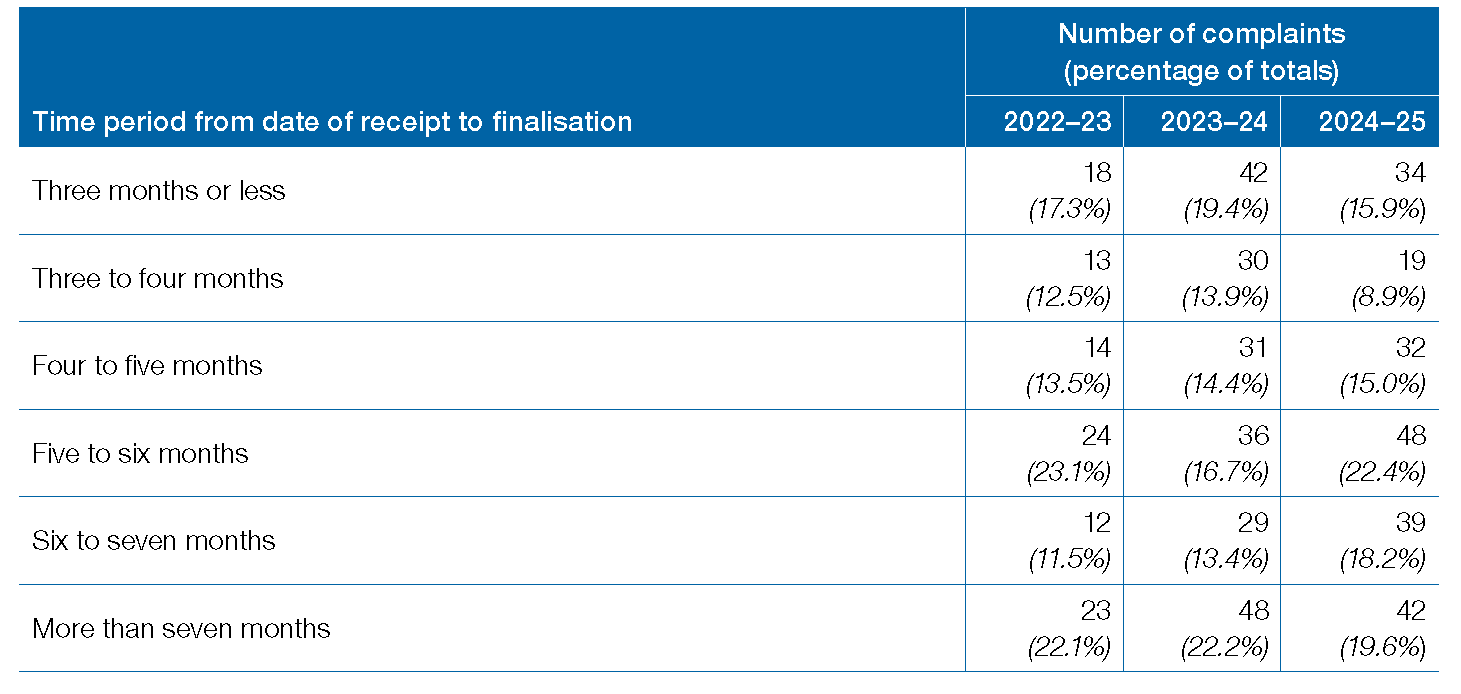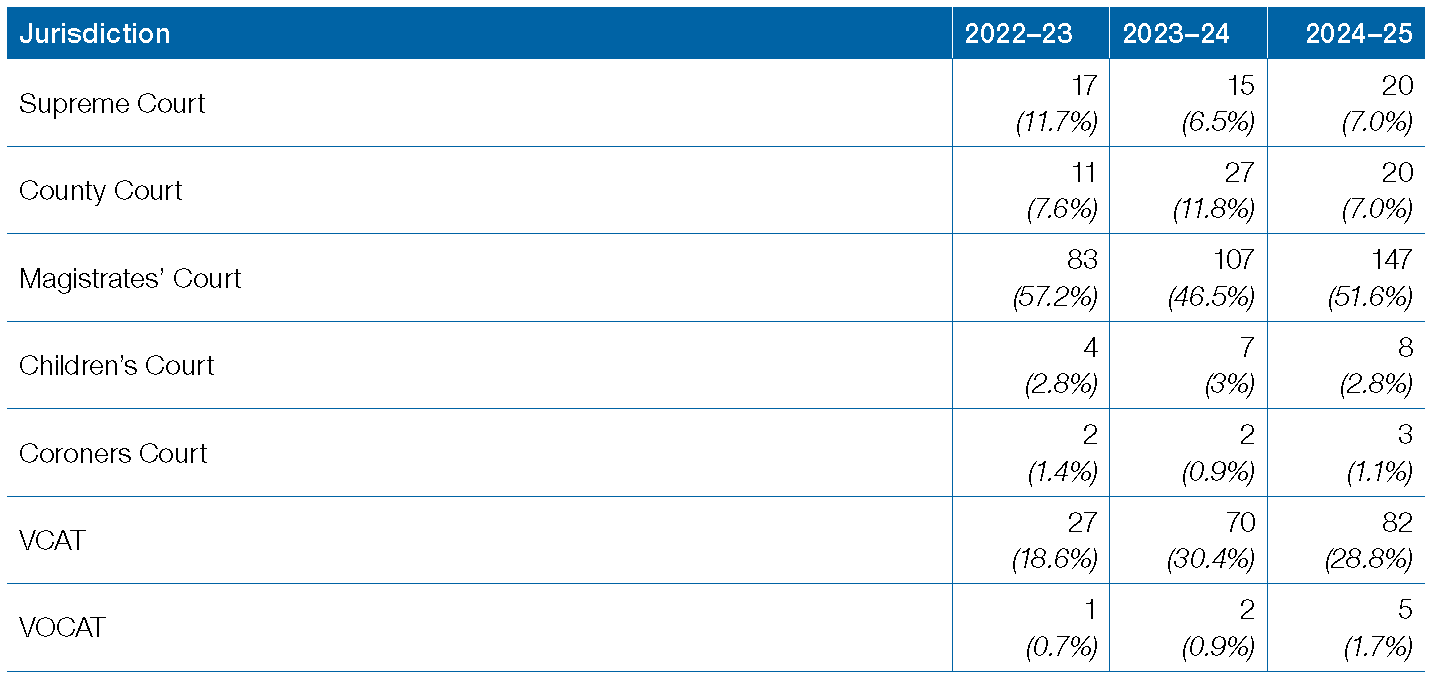Statistics
Each financial year, we report on the receipt and investigation of complaints about judicial officers and VCAT members. Here you can find key results and data about complaint outcomes and timeframes, and the nature and scope of complaints, including how many complaints were received about each court or tribunal and why complaints were dismissed under the Judicial Commission of Victoria Act 2016.
Comparison of key complaints data from the last three financial years
Time taken to finalise complaints and percentage of total
Timeliness of finalised complaints
Efficiency in finalising complaints
Number of complaints received per jurisdiction and percentage of total
Number of complaints received from legal practitioners and professional court users
Number of complaints alleging judicial bullying
Grounds for dismissing complaint parts
More information
Footnotes
Comparison of key complaints data from the last three financial years

Time taken to finalise complaints and percentage of total

Timeliness of finalised complaints

Efficiency in finalising complaints

Number of complaints received per jurisdiction and percentage of total

Number of complaints received from legal practitioners and professional court users

Number of complaints alleging judicial bullying

Grounds for dismissing complaint parts

More information
More results and data about complaint outcomes and timeframes and the nature and scope of complaints can be found in our Annual Reports which can be accessed by visiting our Annual Reports page.
Footnotes
1 These figures exclude submissions received prior to 30 June that are triaged as a complaint after 30 June.